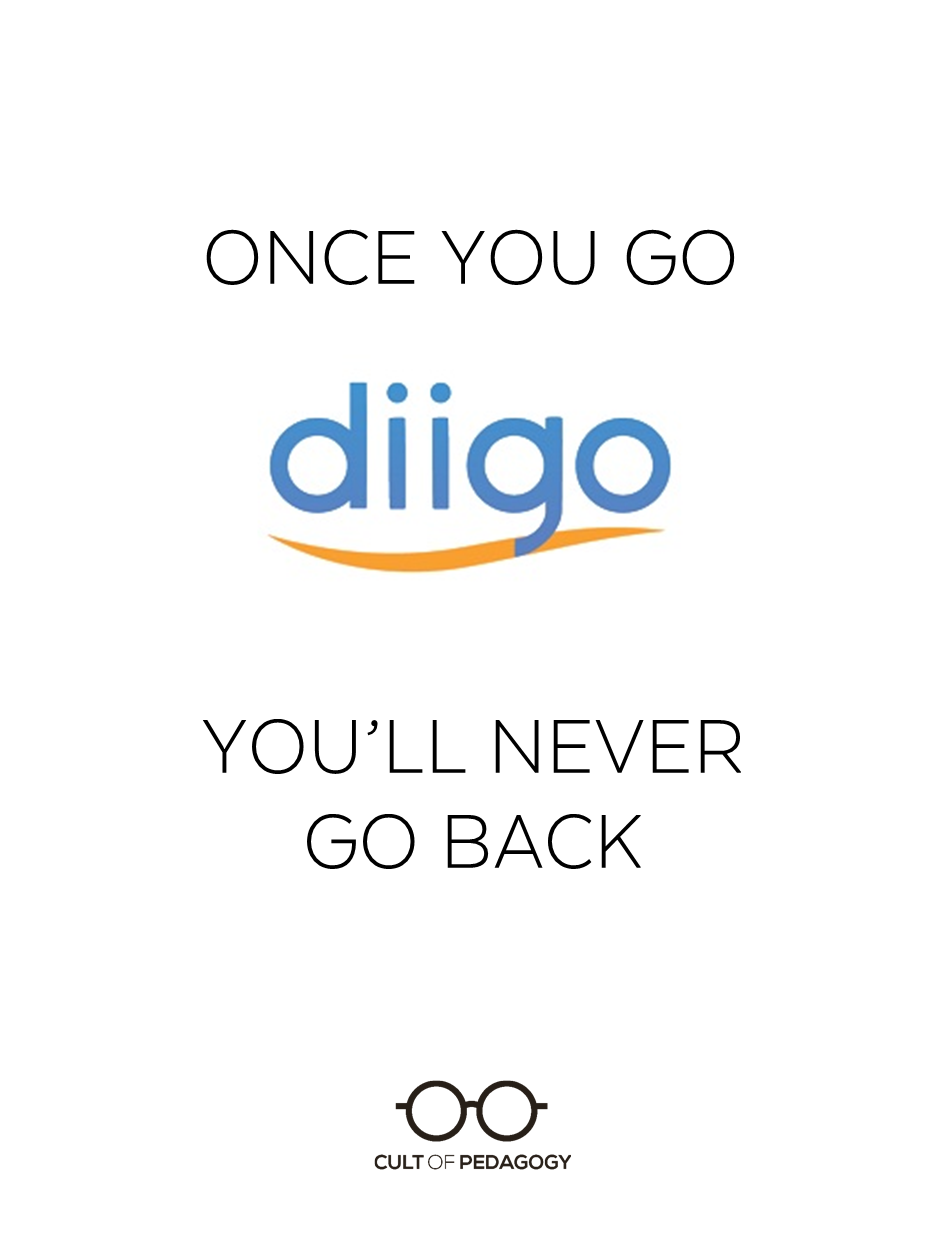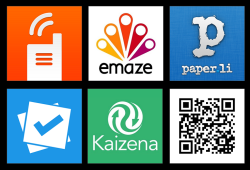
There’s more information on the Internet than anyone can get a handle on. One way to keep your favorite sites organized is to bookmark them right in your browser. I’ve been doing it this way for well over a decade, but it has its drawbacks, the main one being that the bookmarks live on my computer. If I’m somewhere else, I can’t get to them. Web-based bookmarking tools like Delicious or Google Bookmarks allow you to collect bookmarks online, so you can access them anywhere. I’ve looked at both of these and they’re good.
But nothing really compares to Diigo.
Now some of you may have already stopped reading; You don’t have time right now to learn another tech tool. You’re all set with the ones you’re using now. But if you do any kind of serious research, or if you want your students to think more critically, just stick around a few more minutes. I swear you’ll thank me later. I’ve used Dropbox and Google Docs, Pinterest and Facebook. I’ve been on Blackboard for school. I’ve seen Edmodo. There’s something different about Diigo.
What Diigo Does
Like other bookmarking sites, Diigo gives you a place to store and organize bookmarks for anything you’re interested in online — think Pinterest with more words and fewer pictures. But this just scratches the surface of what Diigo can do. For one thing, when you bookmark an item, you can also highlight it and add sticky notes to keep track of specific sections that interest you. And you can collaborate with others in groups, where you share the resources you’ve found on a particular topic, discuss them in attached comments, even start forum discussions.
Let’s say you and a few coworkers have been tasked with learning something new. Instead of everyone doing their own thing and sending each other links to interesting sites, you set up a Diigo group, where everyone posts links to the sites they’ve found. As your collection builds, you discuss the items through comments, and you set up discussions about issues or questions people are having, all in the same central location, updated every time someone engages with it.
Or maybe you want your students to begin a research project. They can work under your supervision in Diigo groups of their own, collecting resources, determining which ones are useful and which are not, practicing appropriate commenting, learning how to tag items for archiving — in other words, participating in the exchange of information and critical thinking that adult professionals do.
So much of what students currently do with technology involves skill drills or consuming pre-recorded lectures, and though these have their place, they do nothing to advance students’ ability to think critically. Even the creative tools — video creation software, for example — don’t really tap into the kind of independent learning skills students will need for future schooling, careers, or lives that benefit from the most current, most reliable information available to them. To do that, students need hands-on practice with the tools that help them access that information.
How to Use Diigo
I’m so excited about this tool, I actually created three separate tutorials to show you how to use it.
Part 1 covers Diigo on a personal level, showing you how to use it just to keep your own stuff organized:
In Part 2, I show you how to set up and participate in Diigo Groups with colleagues, students, and others:
If you are a K-12 or higher ed teacher, Part 3 shows you how to take advantage of Diigo’s Educator Accounts, which have a few special features that make it easier to manage Diigo groups with your students:
If you’re even mildly curious, my advice is that you pick a topic you’re interested in and just try it by yourself for a while. Once you start to get the hang of it, it develops a momentum of its own. And if you’re already a Diigo user, tell us about it! I’m still very new to it, so I’m just starting to think of the possibilities, which at this point are looking pretty endless. ♦
2017 Update: Diigo has undergone some changes since this post was written. See this video for more information!
Join my mailing list and get weekly tips, tools, and inspiration — in quick, bite-sized packages — all geared toward making your teaching more effective and fun. To thank you, I’ll send you a free copy of my new e-booklet, 20 Ways to Cut Your Grading Time in Half. I look forward to getting to know you better!





Since your Diigo post, has Google caught up?
Hi Karen!
I’m not aware of anything that Google offers that is similar to Diigo, but knowing how Google is constantly innovating, I wouldn’t be surprised if something new came along. If anyone reading this is aware of a Google tool that performs a similar function, let us know!
Are you still using Diigo in 2021? I’m researching it now and wondering if it is still relevant?
Erik!!! It’s Debbie Sachs – I work for Jenn and am super excited to “see” you! (Hope everyone is doing well!) I’m also happy to help you out. This is a really old post, but Diigo is still a great tool for collecting and annotating resources. Jenn continues to feature it in the note taking section of her Teacher’s Guide to Tech. I’d play around with Diigo and see what you think. A few other tools you might want to check out are Evernote, Hypothesis, and Kami. Hope this helps! 🙂